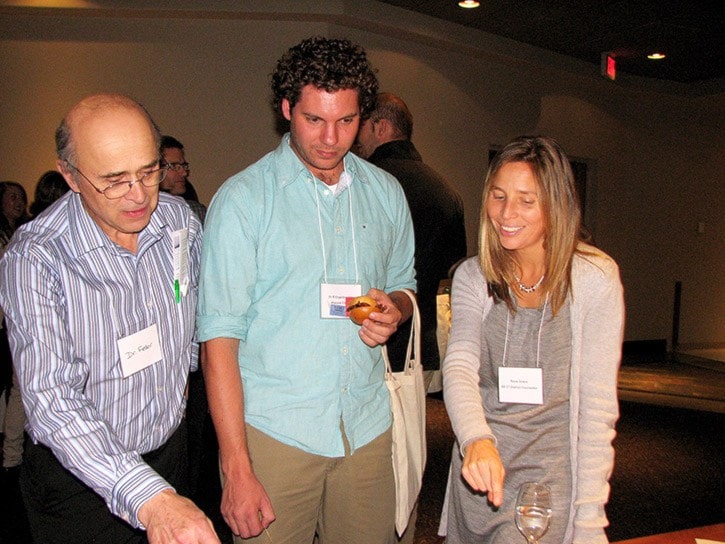Child and youth mental health was on the minds of dozens of people who gathered at Signal Point for a meet and greet last week.
“We wanted people to come together and network,” said Marnie Brenner who offers physician support in her role as Interior Health’s Practice Support Program (PSP) team in Williams Lake.
The goal of the evening was for physicians to meet face to face with child and youth workers in the community, she said.
Dr. Glen Fedor has practiced in the Cariboo for 32 years. As team leader of the PSP he said networking is key.
“There has always been a passion to improve mental health in Williams Lake, so it’s about getting physicians involved, and getting to know what resources are there,” Fedor said.
Physicians are sometimes the initial gatekeeper, Fedor said.
Families will bring a child to the doctor first to find out what’s wrong.
Abdominal pain, for example, can sometimes really be about anxiety, he suggested.
“There are huge gaps in every community on how patients go through the medical system,” Brenner said. “To try and tackle the issue the IH Child and Youth Mental Health and Substance Use Collaborative was formed.”
“We also work with the schools, the Ministry of Child and Family Development, and get everyone to come together to network,” Brenner said.
On Oct. 29, the collaborative will offer a child and youth mental health two-hour evening learning session at Deni House.
“It’s open to almost anybody,” Brenner said.
The training sessions enable physicians, counsellors, teachers, social workers and people working with children to discuss issues in small groups, Fedor explained.
“Say you have a youth who is coming to your office who is feeling very anxious and doesn’t want to go to school. Right now we know in a small town like this we don’t have resources like a psychiatrist who we can refer a child to next week.”
The waiting list to see a psychiatrist can be more than a year, he added.
Empowering physicians with tools and knowledge to address child mental health, work with school counsellors and other agencies, means more youth and families will receive support.
Pointing to a computer screen, Fedor showed off an algorithm designed for working with children.
He clicked on the depression file for an example.
“There’s a depression scale that we go through, tools and guides for parents, assessment for every visit with a physician, how to screen for suicide or substance abuse.”
It’s a simple program that gives physicians tools that probably a lot of them never learned in medical school, he added.
The algorithm is on the Internet and anyone can access it - (http://www.gpscbc.ca/about-gpsc/about-us).
Even if the child’s case becomes “red zone” and too complex, the algorithm suggests who the physician should be referring the child to, or if a psychiatrist should be involved.
“Maybe as a family doctor you’re not ready to tackle this on your own,” Fedor said. “Before people would go to one place and if it didn’t work they’d go try something else. Now we’re trying to take a team approach and work together.”
